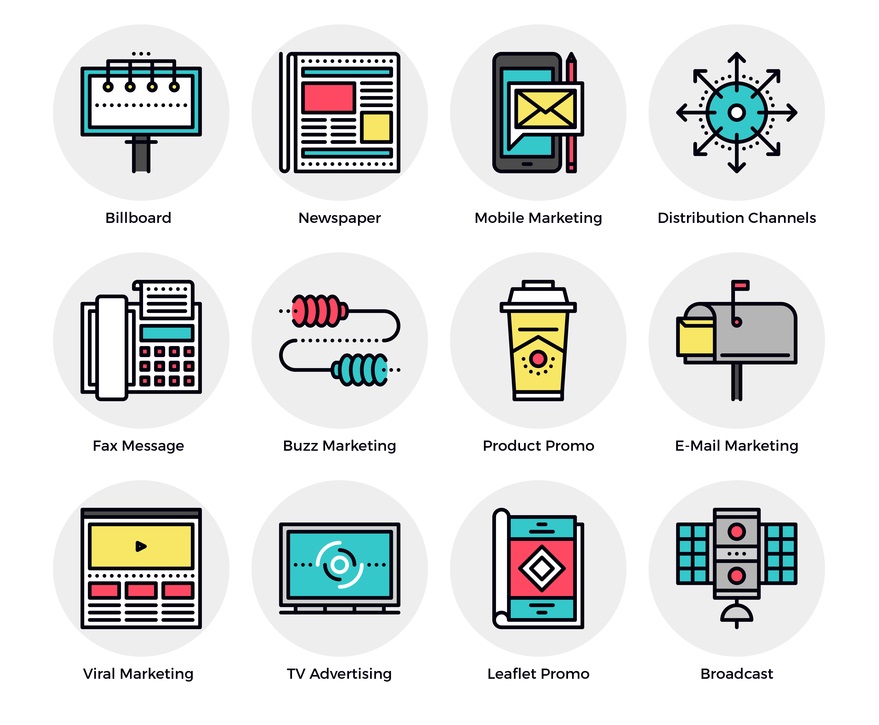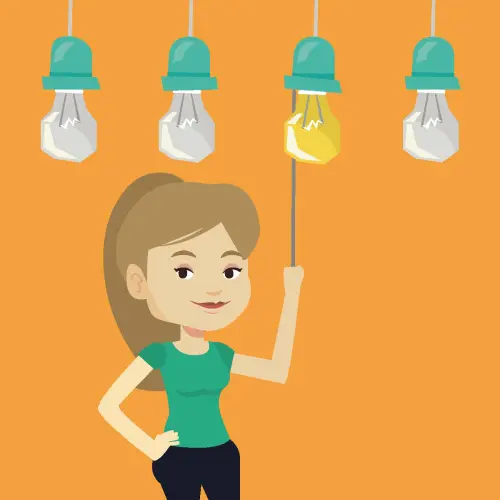In this blog, I share a step-by-step plan (based on the ROEM strategy model developed by Gerretsen and Machielse) that will help you structure and take it to the next level.
1. Set content goals
Why are you using content marketing? That’s the first question you ask when developing a content strategy. It is important to set clear goals. In content marketing, you have different goals for each stage in the buying process. Tip. Determine where in the buying process the most improvement can be made and set that as the main goal.
2. Describe your audience
Describing your audience involves person characteristics. Whereas with target audience you often specify by company size, region and industry, your audience is about the person within the organization reading your content. Describe the ambitions of the reader, what do they want to achieve? Describe the pain points, what are readers running into that your content can help with? In doing so, build a persona. When creating a persona, consider the following questions: what is the person’s age? What does an average day look like? What knowledge is the reader missing? At what stage of the purchase decision process is the reader?
2.1 Develop a content mission statement
When you know what you want to achieve and for whom you are creating content summarize this in a content mission statement. Such a statement consists of a description of your core audience, the material you provide, and the result it delivers to the reader. A simple template to describe your content mission statement is, “our company is what [het kernpubliek] content is about [welke content] so they [resultaten].”
For Customer Factory, the content mission statement is:
“At Klantenfabriek, entrepreneurs find knowledge in areas of communication, marketing and sales that gives them (practical) insights to achieve greater returns.”
Want to know more?
3. Choose a central theme
In step 3, you think about what you are going to communicate about. Because this is what readers are drawn to and you are going to have a captive audience on this topic, it is important that it is broad enough to write about. A theme stems from your mission or expertise and the pain points or aspirations of your audience. Where the overlap is, you can make it the theme.
Practical example. At Klantenfabriek, we have a lot of knowledge in the field of communication, marketing and sales (what we think of as commerce) and the ambition of our audience is to reduce commercial costs and increase revenues. Our theme for this year is therefore:
“More return on communications, marketing and sales.”
4. Develop formats and describe how you will communicate
When you know what you are going to communicate about, it is time to think about how you are going to communicate. When developing formats, you can think of it as crazy as you want. My advice for companies with a small budget is to develop some simple formats that are easy to use. An example of a content format is a top six list, such as this blog. Another content format is the Q&A, in which you take a central question and answer it in a blog or video. Within b2b companies, reconstructions such as customer cases also work well. When it comes to some more interactive content, quizzes or questionnaires work well, such as our image scan. When you’ve been working on content marketing for a bit longer and have more experience, you can also possibly set up podcasts or live streams. If you want more inspiration on formats look here.
Want to know more?
5. Devise a content structure for your content strategy
When developing a content structure, you must consider what kind of content you will deploy where in the buying decision process and what channels you will use.
5.1 Types of content
We distinguish 3 types of content inspired by the 3-h content model, originally developed by youtube. However, the 3-H model is very specific to video and online. The types of content we distinguish are audience, domain and target content.
5.1.1 Audience content
“Audience content is unique, large-scale content to generate attention.”
Felix Baumgartner’s jump (organized by Red Bull) or Nutricia’s nine-month trade show are examples of audience content. This is content with the goal of increasing brand awareness. It is always theme-oriented. This content is widely used on social media. Audience content within the b2b environment can be publishing an annual report/whitepaper or a major annual event/exhibition.
Characteristics: viral, thematic, push
Goals: create awareness, develop better image, generate traffic
5.1.2 Domain content
“Domain content is regularly recurring content that captivates your audience and keeps them coming back.”
This content is also theme-oriented. Domain content can be anything from a semi-annual magazine, monthly vlog or weekly blog. The goal is to create a captive audience. For example, domain content for lawyers could be a quarterly report detailing the latest law changes and how you as a firm can respond to them. One topic that many lawyers have written about in recent months is the new privacy law and how to deal with it as a business.
Characteristics: periodic, thematic, push
Purpose: lead generation
5.1.3. Target Content
“Targeted content is always available content that matches your audience’s search query and interest. It’s content that every organization should have.”
It is often information about your products or services that the reader can use to properly orient and inform themselves. Target content is to generate traffic through search engines and give existing relationships background information. Think of target content as how-to videos, roadmaps, frequently asked questions section and testimonials.
Characteristics: product-oriented, pull
Goals: web traffic, creating interest and brand preference, brand loyalty, increasing satisfaction, upselling
5.2 Which channels

Describe what you will communicate through what channels. In doing so, think carefully about the different functions of different channels. Traditional marketing channels such as posters, radio and TV commercials target the public with the goal of improving brand awareness. Online marketing channels such as social media serve different purposes and you can create multiple types of content for them. You can use Twitter as a service desk and distribute your audience communications. Linkedin, on the other hand, is better for distributing domain content, and facebook, on the other hand, is very personal and more audience-oriented. Keep in mind your content goals and your audience description. A channel can achieve different goals for different companies.
Want to know more?
In conclusion
Once you have gone through these steps, you can create a concrete content schedule. Once you have figured out what content you are going to create put it away in time. That way, you can use content marketing in a structured way. Look here for inspiration on what content forms are out there.
I like to end this blog with a word of advice; people today receive more than 500 commercial impulses a day and are becoming less and less receptive to them. So use content marketing to provide people with information that is useful to them.
All beginnings are difficult, which is why we are happy to help you in our workshop from keyword to content. In 2 hours, we will offer you several tools that will help you get a good start with content marketing.




